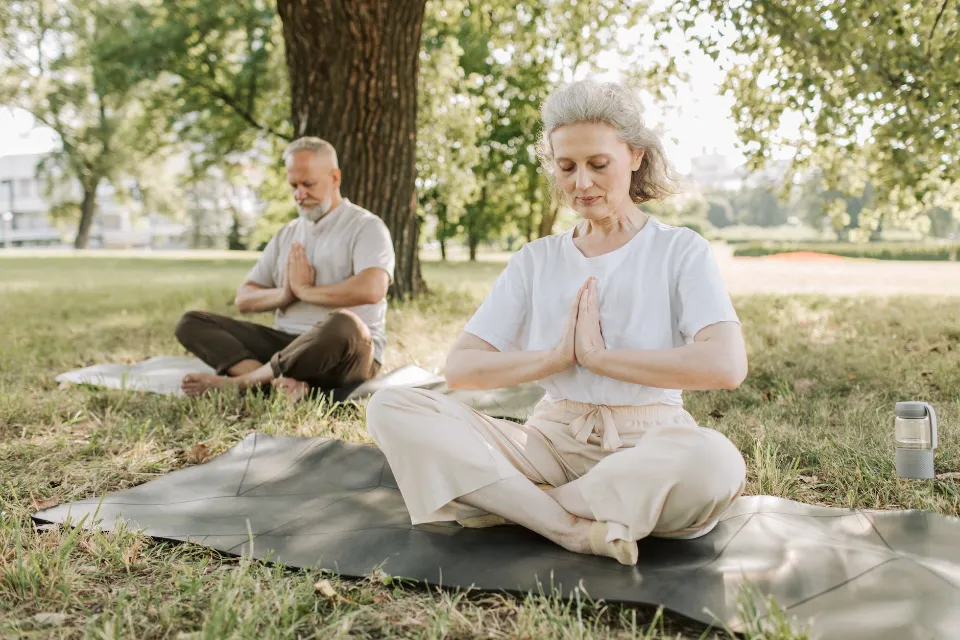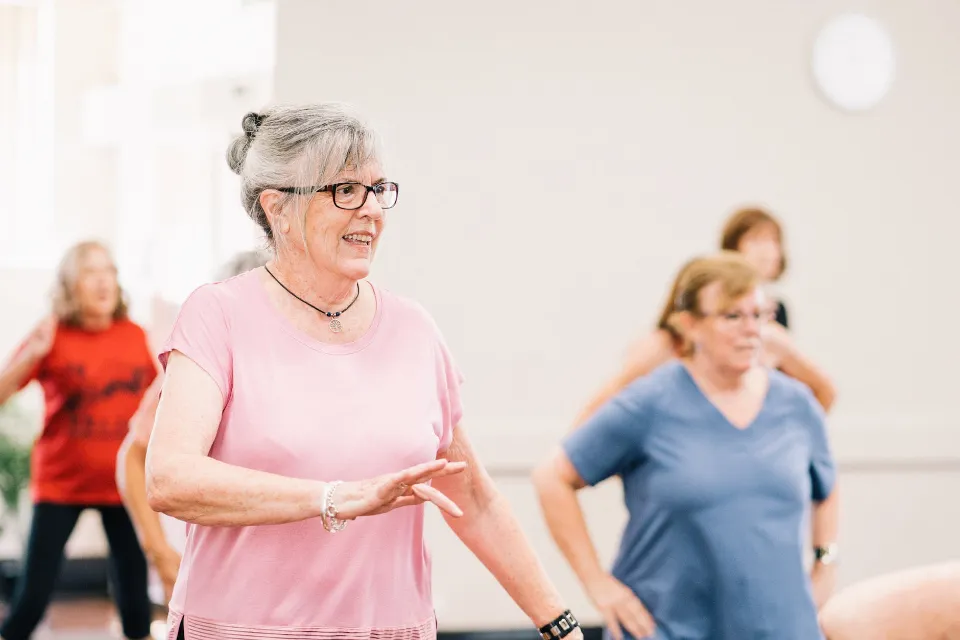The term “aging” encompasses more than just obtrusive wrinkles and gray hair that can catch you off guard when you look in the mirror. Your body undergoes numerous changes beneath the skin, one of which is sarcopenia, or the loss of lean muscle mass.
There’s a good chance you won’t be able to lift as much weight as you could when you were younger (unless you make it a priority in your daily life), but that doesn’t mean you can’t continue to gain muscle after 60. building muscle after age 60 isn’t as difficult as you might think.
In this article, we’ll explain the science behind gaining muscle after age 60, including how long it takes to gain muscle, what foods to eat to do it, and which exercises to do.
Can You Build Muscle After 60?
It’s a common misconception that you can’t build muscle after 60. In reality, you can still gain muscle at any age; it just might take a little longer than it did when you were in your 20s or 30s. It’s never too late to start exercising, even if you’re over 60.
Resistance training can aid in muscle growth even if you have never worked out before, according to a recent University of Birmingham study.
The study compared eight “untrained older male” participants between 60 and 80 years old with seven “older male athletes” in the same age range who consistently trained for two decades. Both groups were able to gain muscle in an equivalent manner.

The secret is to exercise steadily and patiently. While progress might not be as apparent as it was when you were younger, it is still possible with time and effort. After all, lifestyle decisions more than anything else determine how much muscle you can build.
Overall, you can continue to gain muscle mass well into your 60s and beyond as long as you maintain a healthy diet and engage in regular exercise. You can become a stronger, healthier version of yourself with some perseverance and consistency.
How to Regain Muscle Mass After 60?
Start Strength Training Just Now
Let’s face it: Strength training rules, particularly when it comes to preserving and growing your muscle mass. Priore dubs it “the most important habit you can develop to increase muscle mass at any age.”
Performing exercises that have “progressive overload,” which means bumping up the intensity of the movement by slowly increasing the time, number of reps, or weights, helps you build back muscle mass. According to Priore, “More energy throughout the day, additional arthritis prevention, better posture, and improved flexibility are additional advantages. We are also more susceptible to these conditions as we age.”
If you’re new to strength training, incorporate it into your fitness routine two to three times per week for 30 to 45 minutes.
Set Strength Training Goals
Let’s discuss goal-setting now that we have established the importance of strength training. When kicking off any health and fitness regimen, it’s essential to provide yourself with small goals. Be patient, it’s all a process, is another important piece of advice.
According to Priore, “Discouragement can result from setting unrealistic goals or anticipating rapid muscle growth. Muscle regain takes time.” Writing down your objectives for the next month, three months, and six months is something she advises. Write down your accomplishments and areas that need improvement after each period is over. As you review your progress, make any necessary adjustments to your goals.
Promote Your Protein Intake
Increasing your protein intake has a number of positive health effects. Priore tells us, “You’ll be able to lose weight while also gaining back some muscle mass thanks to this. A person trying to increase muscle mass should have .5 to .8 grams of protein per pound of body weight a day.”
Focus on Cardio
Okay, we can’t say enough good things about strength training, but let’s not forget to show low-impact cardio some love, too. It’s incredibly beneficial to schedule time for low-impact cardio exercises like walking, elliptical use, swimming laps, or hiking your favorite trails. According to Priore, this type of exercise can help with fat loss and body toning. Start incorporating low-impact cardio into your regular fitness routine as soon as possible.
Do Stretch
Older adults over 60 who stretch regularly prevent injuries and sore muscles. It’s a necessity—not a question—to perform a solid warm-up and cool-down routine for every workout you do. In addition, Priore explains, “Spending a little time stretching on days when you aren’t strength training will help you posture, get rid of back pain, and increase flexibility.”

Rest is the First Thing
You might not know this, but getting enough quality sleep after the age of 60 is equally as crucial to maintaining a healthy diet and exercise routine. “Active adults should get at least seven hours of sleep a night,” Priore explains, adding, “A good night’s sleep gives your muscles time to recover from workouts and other activities. Your muscles can recover while you sleep, giving you more vigor for your upcoming workout.”
Best Exercises to Build Muscle After 60
Exercises that are effective for gaining muscle at any age are also the best exercises to strengthen your muscles after 60. Compound movements like squats, deadlifts, and presses, along with strength training, are the fastest way to gain muscle.
You can quickly gain strength and size by performing these exercises, which simultaneously work several muscle groups. They ought to form the basis of your exercise regimen. Apart from strength training, here are a few other types of exercise that can help you build muscle after 60:
- Tai Chi is a style of martial arts that places a focus on slow, deliberate movements. It’s often described as “meditation in motion” and is known for its many health benefits, including muscle building
- Swimming is a fantastic, easy-on-the-joints, low-impact workout. It’s also an excellent way to build muscle since it works all of the major muscle groups
- Yoga — another low-impact workout that is easy on the joints while increasing flexibility and strength
Conclusion
While gaining muscle may be more difficult for you now than it was when you were younger, it is still possible with the right strategy and diet. Even though everyone is unique, these exercises and advice should get you started. We’ve looked into some of the best ways to gain muscle after 60.



